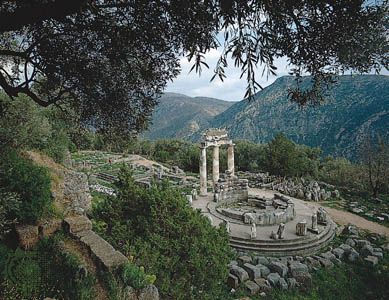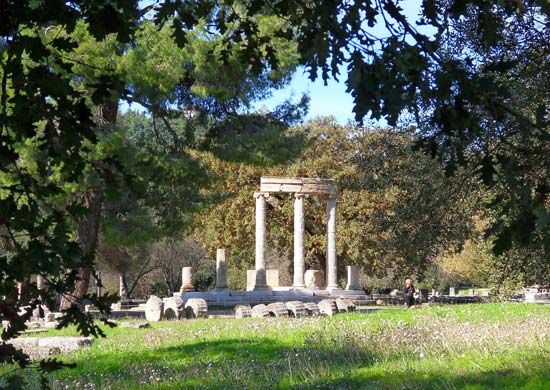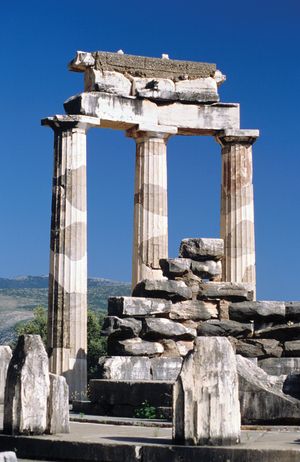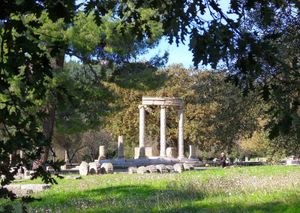tholos
tholos, in ancient Greek architecture, a circular building with a conical or vaulted roof and with or without a peristyle, or surrounding colonnade. In the Mycenaean period, tholoi were large ceremonial tombs, sometimes built into the sides of hills; they were beehive-shaped and covered by a corbeled arch. In classical Greece, the tholos at Delphi had a peristyle; the tholos in Athens, serving as a dining hall for the Athenian Senate, had no outside columns. The tholos at Epidaurus, designed by Polyclitus, was a circular chamber with a Doric colonnade outside and a Corinthian within; it contained exquisite carvings. The foundations were a series of concentric walls with doors and partitions that made a subterranean labyrinth. The tholos at Olympia, known as the Philippeum, was a round building of the Ionic order, with Corinthian half columns on the inside; it was erected by Philip II of Macedon to commemorate his victory over the Greeks at Chaeronea in 338 bc.


















